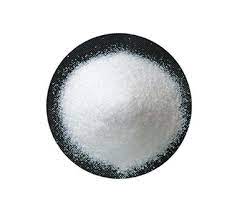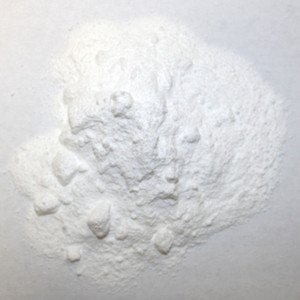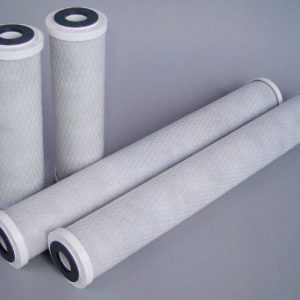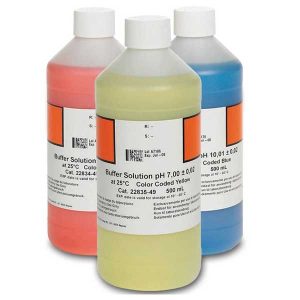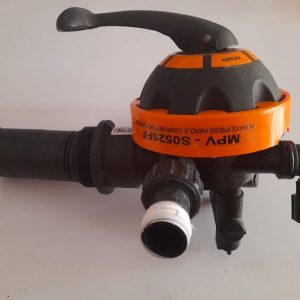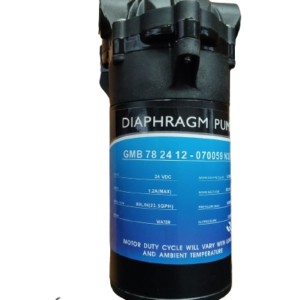Water treatment experts.
Email: info@aquatreat.co.ke
Call: +254724083450
What'sApp: +254724083450
Description:
The use of Flocculants and Coagulants in waste treatment and water treatment
Flocculants and Coagulants when used in conjunction with each other provided efficient and cost effective means to remove suspended particles in water solutions or slurries. Some particles would settle out of the water on their own, given enough time. But other particles would resist settling for days or months due to small particle size and to electrical charges between the particles. Coagulants are primarily used to remove extremely small suspended particles in solution which do not settle rapidly. The flocculant primary use is to bind and agglomerate suspended particles in water to form large particles to assist in their settling and facilitate removal through particle and water separation processes.
The primary purpose of the coagulation/flocculation process is the removal of turbidity from the water. Turbidity is a cloudy appearance of water caused by small particles suspended therein. Water with little or no turbidity will be clear.
Turbidity is not only an aesthetic problem in water. Water with a high turbidity can be very difficult or impossible to properly disinfect. As a result, the maximum allowable level of turbidity in water is 0.5 NTU, while the recommended level is about 0.1 NTU. (NTU, or TU, stands for nephelometric turbidity units, a measurement of the turbidity of water.)
Turbidity and color are much more common in surface water than in groundwater. As surface water flows over the ground to streams, through streams, and then through rivers, the water picks up a large quantity of particles.
What is Flocculation?
Flocculation is the process particles undergo when their interactions in water are destabilized in the presence of another molecule causing them to come together and bind with each other to form large, agglomerated particles that are easily settled. Polymeric molecules are often used to facilitate this process because they can be customized to increase or decrease their destabilizing potential by the surface charge of the molecules. The higher the charge density, the more destabilizing affect they can have. The lower the charge density, the less affect they will have on the particles in suspension. As a result, scientists deploy various combinations of charges, molecular structures and even elemental makeup of the flocculants to tailor their water treatment protocols to each individual application.
How Flocculants Work?
Used in a wide range of industries and applications, flocculants help to remove suspended solids from wastewater by aggregating contaminants into flakes or “flocs” that float to the surface of the water or settle at the bottom. They can also be used for lime softening, sludge thickening, and solids dehydration. Natural or mineral flocculants include activated silica and polysaccharides, while synthetic flocculants are most commonly based on polyacrylamide.
Depending on the charge and chemical composition of your water/wastewater, flocculants can either be used on their own or in combination with coagulants. Flocculants differ from coagulants in that they are often polymers, whereas coagulants are typically salts. They can range in molecular size (weight) and charge density (% of the molecule with either anionic or cationic charges), which is used to “balance” the charge of the particles in the water and cause them to come together and dewater. Generally speaking, anionic flocculants are used to catch mineral particles while cationic flocculants can capture organic particles.
What is Coagulation?
Coagulation is a somewhat simple chemical process that involves bringing insoluble materials together by manipulating the charges of particles, by adding iron or aluminum salts, such as aluminum sulfate or ferric sulfate, to a wastewater stream. The primary purpose of using a coagulant besides removing vary fine particles from suspension is that this process results also in less turbidity of the water, i.e. clearer water.
With coagulants’ positive charge, the negatively charged particles in the water are neutralized. This causes the suspended solids in the water to bind together into larger flocs. These larger flocs begin to settle at the base of the water supply. The larger the size of the particles, the quicker the floc settles.
Coagulation helps to remove a number of different pollutants that cause your water to become dirty or toxic, including:
- Organic compounds and certain dissolved organic materials, commonly referred to as Natural Organic Matter (NOM) or Dissolved Organic Carbon (DOC)
- Suspended inorganic precipitates like iron and some metals
- Certain viruses and bacteria
Types of Coagulants
Organic Coagulation
Organic coagulants are best used for solid-liquid separation. They are also good options to use when trying to reduce sludge generation. Being organic in nature, these coagulants offer the added benefits of working at lower doses and having no effect on the pH of your water.
Organic coagulants are typically based on the following formulations:
PolyAMINEs and PolyDADMACs – These cationic coagulants work by charge neutralization alone and are the most widely used organic coagulants. PolyAMINEs and PolyDADMACs neutralize the negative charge of colloids in your water, forming a spongy mass called a “microfloc.” Since they only coagulate through charge neutralization, they don’t offer any advantages in regard to the sweep-floc mechanism (explained later with inorganic coagulants).
The main advantages of organic coagulants include; lower dosage, lower volume of sludge produced and no effect on the pH.
Inorganic Coagulant
Inorganic coagulants are typically cheaper than their organic counterparts, making them a cost-effective solution for a broad range of water treatment applications. They are especially effective when used on raw water with low turbidity.
When added to water, inorganic coagulants form aluminum or iron precipitates. These help to clean the water by absorbing impurities in the water as they fall.
The main types of inorganic coagulants include:
- Aluminum Sulfate (Alum) – As one of the most common water treatment chemicals used in industrial processes, alum is the go-to coagulant choice for many. Manufactured as a liquid, alum’s crystalline form is created when the liquid is dehydrated. It should be noted that alum is mildly hazardous and has similar health effects/corrosion characteristics as diluted sulfuric acid.
- Aluminum Chloride – This coagulant works similarly to alum, but it’s more expensive, hazardous and corrosive. As such, it’s usually only picked as a second choice in processes where alum could not be used.
- Polyaluminum Chloride (PAC) and Aluminum Chlorohydrate (ACH) – These inorganic coagulants are best used for more basic water supplies.
- Ferric Sulfate and Ferrous Sulfate – While ferric sulfate is more commonly used, both iron coagulants work similarly to aluminum coagulants. Ferrous sulfate is typically a good choice in applications where you need a reducing agent or excess soluble iron ions are required.
- Ferric Chloride – Since it is generated as a waste material from steel making operations, ferric chloride is the least expensive inorganic coagulant. However, it’s only used in facilities that can handle its reputation as the most corrosive and hazardous inorganic coagulant.
Once you have the right coagulant, you add these chemicals to your dirty water and mix rapidly. That way, the coagulant is quickly and easily circulated throughout the water.
How to Select the Right Flocculants and Coagulants?
Selecting the right flocculants and coagulants for your facility is crucial for effective operation of the water treatment systems. There are several key factors to consider in order to make the right selection for your site:
- Water source quality
- System design and operation
- Desired water treatment outcomes
- Chemical compatibility
- Cost efficiency
- Safety and environmental impact
How to Select a Flocculants?
To select a flocculant, consider the following factors:
Type of suspended particles: Different flocculants are effective for different types of particles, so it’s important to identify the composition of the particles to be treated.
- pH level: The pH level of the water or wastewater can impact the effectiveness of the flocculant, so it’s important to determine the pH level before selecting a flocculant.
- Dosage: The dosage of flocculant needed will depend on the concentration of suspended particles and the desired level of clarification. Lab testing should be conducted.
- Compatibility with other chemicals: If other chemicals are being used in the water or wastewater treatment process, it’s important to select a flocculant that is compatible with these chemicals to avoid any negative impacts.
- Cost: The cost of the flocculant is an important consideration, especially for large scale operations.
- Environmental impact: Consider the environmental impact of the flocculant, including any potential toxicity and biodegradability.
How to Select a Coagulant?
To select a coagulant, consider the following factors:
- Type of suspended solids: Different types of suspended solids require different types of coagulants. For example, charged particles may require cationic coagulants while non-charged particles may require anionic coagulants.
- Concentration of solids: The higher the concentration of solids, the stronger the coagulant needed.
- pH of the solution: The pH of the solution should be considered when selecting a coagulant as some coagulants only work effectively within a specific pH range.
- Compatibility with other chemicals: Some coagulants can react with other chemicals present in the solution and should be avoided.
- Cost: The cost of the coagulant should also be considered, as some coagulants can be more expensive than others.
- Environmental considerations: Some coagulants can have adverse environmental effects and should be avoided or used in a limited capacity.
It is recommended to conduct jar tests to determine the most effective coagulant for a specific solution. These tests involve adding various types and concentrations of coagulants to a sample of the solution and observing the coagulation process.
Once a coagulant is selected, it is important to monitor the process and adjust the dose as necessary to ensure effective and efficient coagulation.


